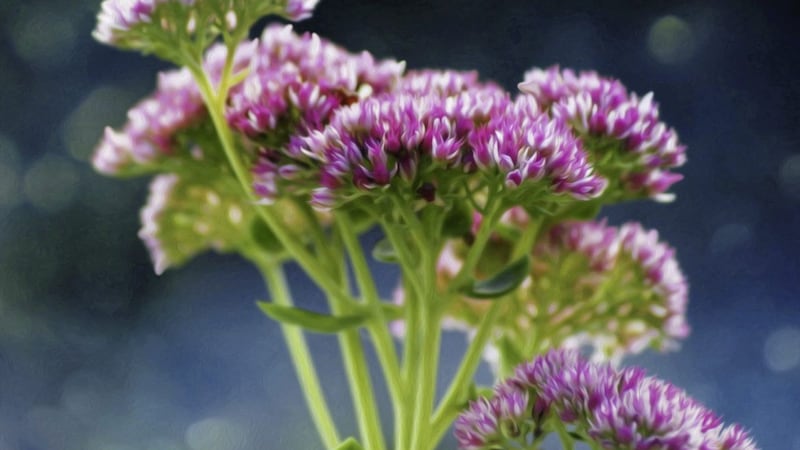THE late summer garden buzzes with activity; thousands of insects on the wing, appearing to enjoy the nectar-fuelled feeding frenzy. The bees have their favourite stops – teasel, lavender and the globe thistles rank in the upper quartile. As does sedum – commonly known as ‘stonecrop’ – an understated plant to us, perhaps, but extreme indulgence for Apis mellifera or other species of native bee. The butterflies are also a bit partial to it.
I call it Sedum; the variety, as far I can tell, is the quite common ‘Autumn Joy’. However, these days the same plant is known to purists as the rather cumbersome Hylotelephium (Herbstfreude Group) ‘Herbstfreude’. I’m going align myself with the nomenclature traditionalists on this one, if for no other reason than it’s much easier to get my tongue around Sedum ‘Autumn Joy’.
As I’ve already alluded, it isn’t a plant that will jump out of a border at you but it will reliably fill a sunny spot towards the front while ticking the ‘wildlife friendly’ box.
In summer its long pale blue-green stems are topped with salmon-pink broccoli-like flowerheads. Look closer and there scores of tiny flowers, each rich in insect bounty. As we move into autumn the flowers mature to pinkish-bronze then copper red.
To get the best from it you have to be cruel, or at least neglectful, which in my case takes little effort. Plant in soil that’s too rich in nitrogen and its growth will have less rigidity. Over-watering too won’t help keep this drought-tolerant succulent upright, which is why staking is recommended if neatness and uniformity are desired. The alternative solution to avoiding flop is not a botanical viagra but the more gruesome sounding ‘Chelsea chop’.
Carried out in the week of the Chelsea flower show or thereabouts – late May-early June – the aforementioned chop involves cutting back herbaceous perennials, encouraging bushier growth that has less time to get leggy and fall over. It’s not alone – many late summer perennials are especially susceptible to flopping in the relatively wet conditions like we’ve been experiencing so far in August.
Beyond autumn and into winter an upright Sedum 'Autmun Joy' will provide architectural value, looking especially well when frosted.
The sedum family varies in shape and size, from diminutive varieties best suited for utilising on green roofs or rockeries to those more appropriate for beds and borders. As succulents what they share is an ability to store water in their leaves, stems and roots, which means they are unfussy and will thrive in dry, poor soil as long as it's well-drained. They enjoy a sunny position and the sun not only improves flowering and shape, but often leaf colour, especially in darker leaves.
As well as 'Autumn Joy’, check out 'Gooseberry Fool’, which really does look like broccoli – albeit the sexiest green-white broccoli you ever saw.
If your borders need a shot of vibrant colour in late summer try Sedum 'Mr Goodbud', with its bright pink and purple flowers. The leaves have a purple edge and the strong, pink tinted upright stems add to its colourful impact.
Sedum 'Matrona' is reputed to be a better alternative to ‘Autumn Joy’ as it holds its shape longer. Statuesque and colourful, this sedum has pinky tints and purple veins in the leaves and stems, which set off its pink star-shaped flowers.








